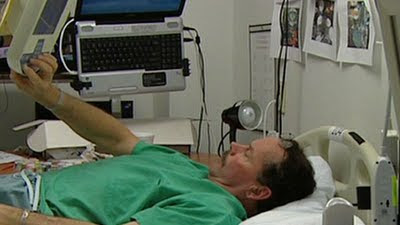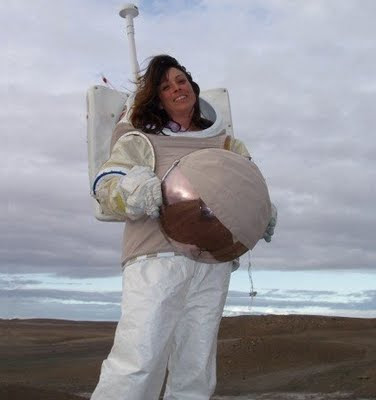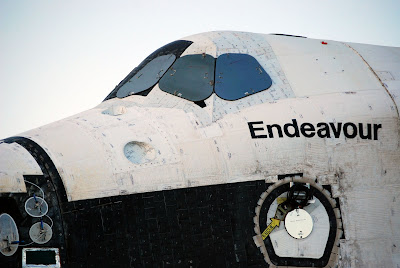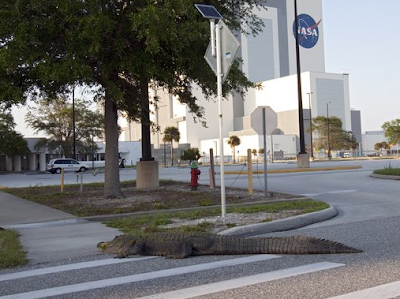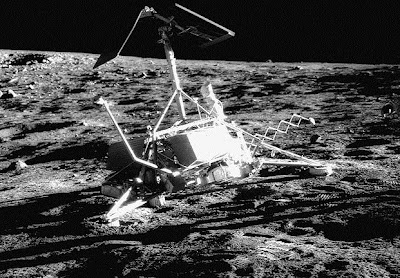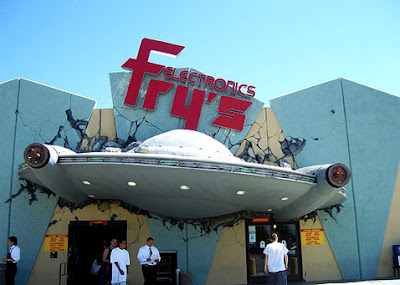
Another exciting site for Mars simulations is the
Mars Desert Research Station in Utah, managed by Dr. Robert Zubrin of the Mars Society.
Laksen Sirimanne, veteran of two MDRS missions, made time in his busy international travel schedule to discuss his co-authoring of the amazing book
The Mars Diaries: Crew #88 of the Mars Desert Research Station, edited by journalist David D. Levine.

Mars Crew #88 outside the Hab
Laksen, David, Paul, Steven, Bianca & Diego
Four of five crew members blogged during their Mars sim, discussing the Green Habitat, pressurized tunnels, water recycling systems, plant farms for water purification, inverter and power systems, generators, ATV "rovers", etc. Ever wondered what it would be like to perform a simulation with such strict protocols that you cannot go outdoors unless you're wearing a full space suit? The crews go to great lengths to ensure the simulations are as accurate as possible to off-planet exploration! Crew #88 included:
1. Commander Steven Wheeler2. Chief Engineer Laksen Sirimanne - BLOG:
The Sky Is Not The Limit (
English)
3. Health & Safety Officer Bianca Nowak - BLOG:
Bianca Goes To Mars (
Dutch)
4. Chief Biologist DiegoUrbina - BLOG:
Déjame mi Espacio (
Colombian Spanish)
5. Chief Astronomer Paul McCall - BLOG:
Never-Ending Journey (
English)
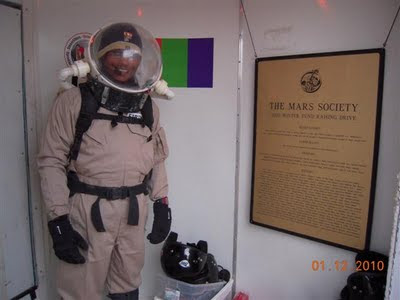
I noticed that among your four masters degrees, one is in Aerospace engineering and Astronautics; is that what drew you toward The Mars Society?LAKSEN SIRIMANNE: Actually, I have been in the
BioMedical field for about 20 years now. Since I am not in the space field, I wanted to contribute in some way towards furthering human spaceflight, and I thought a simulated missions was a great start. When I was growing up in Sri Lanka, my dad used to take me to the American Center where Arthur C. Clark gave talks and showed images of Saturn and Jupiter, taken from Voyager. I was 5 years old when Armstrong landed on the moon and am a huge fan of the shuttle program, so I feel like I grew up with NASA. I have always been drawn to spaceflight. Now I am following Elon Musk and
SpaceX too, so you will see more blog posts about them. I am certain that I'll at least fly a sub-orbital flight (probably with Virgin Galactic), but my real goal is an orbital flight.
I also returned to MDRS in June as part of Crew #95, on a refurbishment and refitting mission to prepare the habitat for this year's crew seasons, and had a chance to work with some of the pioneers: Artemis Westenberg, Keith Keiplinger, Josh Nelson and Gary Fisher (who now own
Explore Mars, Inc).
You were the most dedicated blogger during crew habitation, and anyone interested in Mars should definitely read the book! One crew before yours had thermal, electrical, plumbing and computer malfunctions, so you had your work cut out for you. Would it be difficult to be an engineer on Mars?LAKSEN SIRIMANNE: Yes, it's going to take a lot of work to keep equipment running at all times. Similar to actual Mars conditions, the desert around the MDRS is very harsh and there are a high number of equipment failures. Engineers need to be "hands-on" "nuts and bolt" types who can figure out the problem and implement the solution. They have to be knowledgeable in mechanical, electrical, plumbing and a variety of other skills. Small problems can rapidly escalate into bigger problems; engineers have to know the systems inside and out. About the third day, I could tell which faucet was running (upstairs or downstairs) by the sound of the water pump and water pressure, I could tell when the furnace came on or off, and could tell which outer hatch was being opened just by the sound. We had less trouble than most crews because we stayed on top of the issues several times a day.
 My favorite post was your "Day in the Life of a Chief Engineer" where you give describe the conditions, temperature, tasks and your Spacesuit Mobility Experiment. Did you feel like you met all your research objectives? Would you have stayed longer?LAKSEN SIRIMANNE:
My favorite post was your "Day in the Life of a Chief Engineer" where you give describe the conditions, temperature, tasks and your Spacesuit Mobility Experiment. Did you feel like you met all your research objectives? Would you have stayed longer?LAKSEN SIRIMANNE: We had a great mission. The crew really clicked even though we came from such different backgrounds. The common themes were a love for space exploration (or anything related to space), smart, funny people with a team player type attitude. Everyone picked their area of responsibility before the mission and worked very hard to perfect their experiments and also share and educate the other members (i.e. astronomer, biologist, engineer etc).
Among the highlights were
assembling the Radio telescope, the EVA Suit Mobility Experiment and the GPS/GeoTagging Experiment. So we accomplished almost all of our research objectives. One other thing that played in our favor was the weather. We had mostly sunny days with blue skies with rain or snow only on the last few. But the crew previous to us suffered very cold weather, and the crew after us many days of snow with high winds.
Part of me would liked to have stayed longer. But another part wanted to go home and back to work. I guess mentally I was prepared for only a 2 week mission. It gets pretty lonely even if you are around other people constantly, and the sense of isolation was very real. I did feel like we were on another planet.

My favorite picture in the book is Diego's farm label: "Eat the fruit but don't eat the plant!" I remember from my sims that food becomes an enormous pleasure in one's day, and I imagine in an extreme environ like you experienced, it's even more so. How were your moods based on whether edibles were appetizing or not?LAKSEN SIRIMANNE: We were asked to participate in a food study that was run by Cornell University and the University of Hawaii. The details are in the book. We had rehydratable foods, and on alternating days we could add hot water to the packs, or add water and use a gas cooker. Breakfast was the worst. I did not like the oatmeal, or the MRE bread and jam... but the soups were absolutely fantastic. The Texas BBQ chili was terrible. Then someone found cans of corned beef which broke up the vegetarian diet and we thoroughly enjoyed beef with rehydrated potatoes, peas and onions. Sprouts grew in the greenhab by the second week, so we had fresh sprouts with one of the dinners. That was fantastic. I am sure that on a mission to Mars the spaceship will have a greenhab with fresh fruits and vegetables. The mood definitely lifted when we had tasty food to eat. But when it was not, nobody complained because everyone knew it was a short mission. I am sure this will be different on longer missions.
What do you think overall about our chances to get to Mars? The challenges are intense… do you think humans will set foot on the red planet?LAKSEN SIRIMANNE: Yes, I do believe that humans will not only set foot on Mars but colonize! Unlike the Moon, which is very close, such that you can make a 10 day visit, the trip to Mars will be too long and expensive for "flag & footprints" type missions. As described in Dr. Zubrin's book
The Case for Mars – we will not just travel to Mars, but crews will be sent to colonize it with a second crew landing before the first crew returns to Earth. The other important consideration is that unlike the Moon, which has no atmosphere, we can use the atmosphere of Mars and the solid CO2 to make oxygen, water, and rocket fuel. I think the first settlers will not be test pilots but electricians, plumbers, masons, carpenters, engineers and technicians. They will be followed by scientists, then families, teachers and journalists. I am hoping that humans will set foot on Mars in my lifetime.
